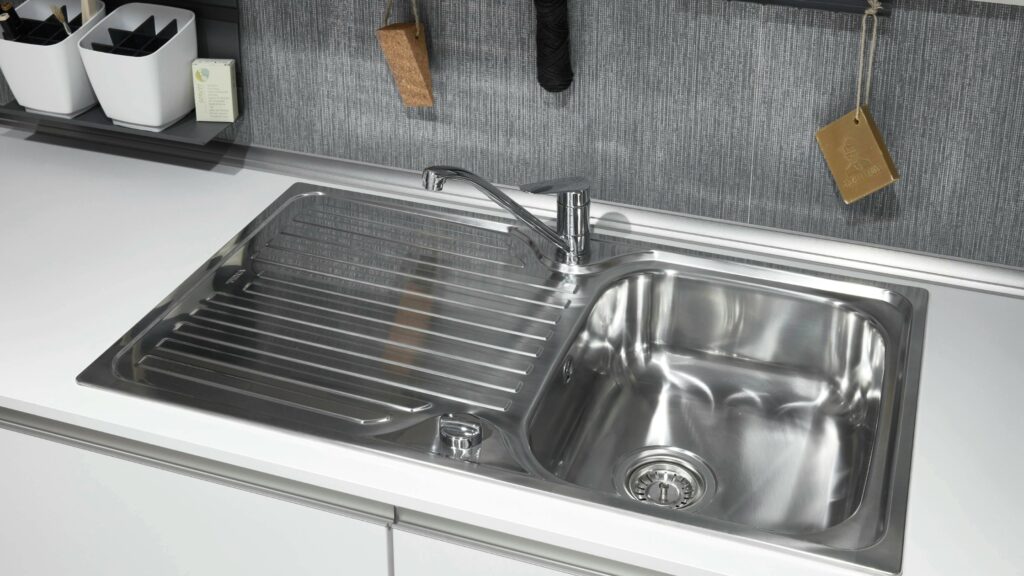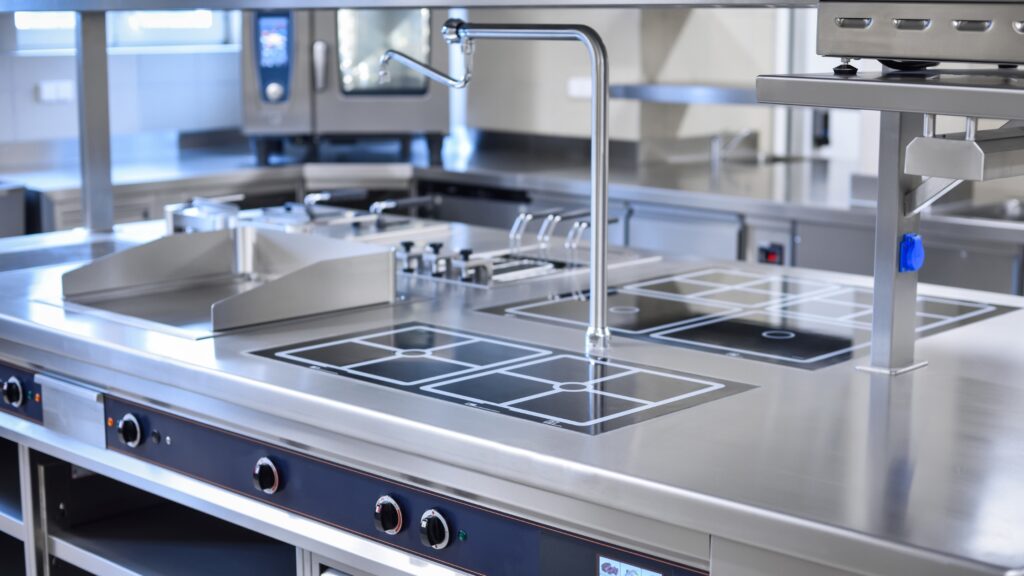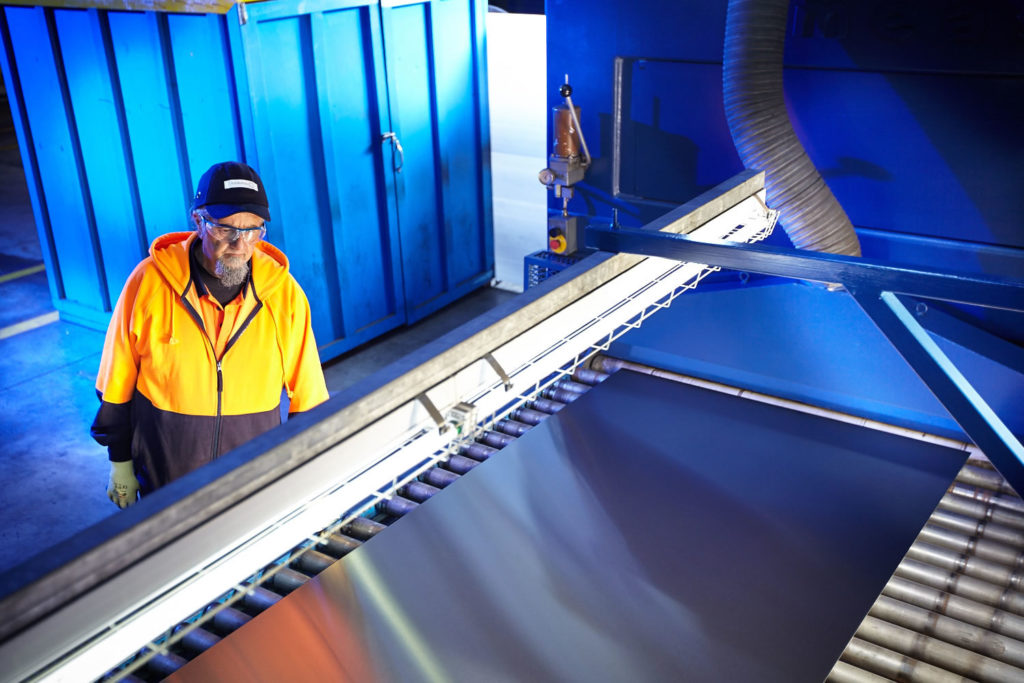When selecting materials for appliances, automotive parts, construction, or industrial applications, understanding the different stainless steel grades is essential. One of the most popular and affordable options is 430 stainless steel. This ferritic stainless steel is known for its corrosion resistance, good formability, and wide range of applications.
In this guide, the steel experts at Midway Metals break down everything you need to know about 430 grade stainless steel. We’ll include what it’s used for, its chemical composition, its mechanical properties, and how it compares to other stainless steel grades like 304 and 316. Whether you’re new to stainless steel or considering materials for your next project, this article will give you the clarity you need to make an informed decision.
What is 430 Stainless Steel Used For?
430 stainless steel is commonly used in areas that require excellent resistance to oxidation and heat but don’t demand the higher corrosion resistance of austenitic grades like 304 or 316. It’s a cost-effective solution for a range of everyday and industrial applications compared to other stainless steel grades.
Here are some of the most common uses of 430 stainless steel:
- Washing machines, dishwashers, and laundry appliances
- Automotive trim, including mufflers and decorative interior finishes
- Commercial kitchen equipment, like splashbacks and range hoods
- Cutlery, kitchen sinks, and benchtop cutting edges
- Architectural features such as internal wall panels
- Cold room shelving and storage racking
- Food processing equipment in mild chemical environments
- Chemical storage units where high corrosion protection isn’t critical
- Indoor structural components and decorative trim
- Electrical panels that benefit from good corrosion resistance
Its magnetic nature, clean surface finish, and good formability make it particularly well-suited for appliance manufacturing and aesthetic applications.

What is the Composition of 430 Stainless Steel?
The 430 stainless steel composition plays a key role in its performance. It belongs to the ferritic stainless steel family, which means it contains no nickel. The absence of nickel gives 430 stainless steel different characteristics than austenitic stainless steels. The typical chemical composition of this stainless steel grade is:
| Element | Percentage (%) |
| Chromium (Cr) | 16.0 – 18.0 |
| Carbon (C) | ≤ 0.12 |
| Manganese (Mn) | ≤ 1.00 |
| Silicon (Si) | ≤ 1.00 |
| Phosphorus (P) | ≤ 0.04 |
| Sulfur (S) | ≤ 0.03 |
| Iron (Fe) | Balance |
The high chromium content is what gives 430 stainless steel its corrosion resistant properties, especially in mild chemical environments. Its low carbon content reduces the risk of sensitisation, though post weld heat treatment is sometimes used to reduce the effects of the heat affected zone in welded structures.
What are the Properties of 430 Stainless Steel?
Understanding the physical properties and mechanical properties of 430 stainless steel helps clarify where it performs best. This stainless steel grade delivers a solid combination of heat resistance, moderate strength, and excellent corrosion resistance in many indoor and controlled environments.
| Property | Value / Description |
| Density | 7.7 g/cm³ |
| Melting Point | ~1425°C |
| Electrical Resistivity | 0.60 µΩ·m at 20°C |
| Thermal Conductivity | 26 W/m·K at 100°C |
| Thermal Expansion | 10.4 µm/m·°C (20–100°C) |
| Tensile Strength | 450–600 MPa |
| Yield Strength | ~275 MPa |
| Elongation | ≥ 22% |
| Hardness (Brinell) | ~150 HB |
| Magnetic | Yes |
| Corrosion Resistance | Good corrosion resistance in mild chemical environments |
| Heat Resistance | Up to 815°C for intermittent service |
430 stainless steel responds well to cold working, which improves strength without the need for costly heat treatment. However, unlike many austenitic stainless steels grades, it is not suitable for applications that require extensive hardening through thermal processes. For structural fabrication, common welding techniques such as fusion welding can be used, although caution must be taken to avoid grain growth in the heat affected zone.
The surface finish is also a major factor in determining how corrosion-resistant the final product will be. A smoother finish helps reduce surface contaminants, making 430 even more suitable for indoor environments and low-moisture applications. Brushed or mirror-polished finishes are popular for visual appeal, especially in appliances and automotive trim.
Corrosion Resistance of 430 Stainless Steel
430 stainless steel offers useful corrosion resistance in mild environments, making it a reliable choice for many indoor applications. However, it is not suitable for immersion applications in water, where corrosion might occur more rapidly. It is resistant to stress corrosion cracking, which means it can be used in situations where most stainless steels like Grade 304 might fail due to this mode of corrosion.
The corrosion resistance of 430 stainless steel can be further enhanced by applying a surface finish, such as a BA (bright annealed) or N4 (polished) finish, which helps to protect the material from surface contaminants and prolong its lifespan.
Will 430 Stainless Steel Rust Outside?
While 430 stainless steel has good corrosion resistance, it can easily rust in outdoor environments. It will generally hold up well in dry, indoor, or controlled spaces. However, in highly corrosive environments such as coastal regions or areas exposed to acidic pollutants, it may eventually show signs of surface corrosion. In those cases, upgrading to 316 stainless steel is a safer long-term choice.
Heat Treatment of 430 Stainless Steel
Heat treatment can be used to improve the mechanical properties of 430 stainless steel. Solution annealing is performed at temperatures between 1065 – 1120°C, followed by rapid cooling to prevent the precipitation of chromium carbides. While 430 stainless steel cannot be hardened by heat treatment, it can undergo stress-relief annealing to reduce internal stresses and enhance its corrosion resistance. This process ensures that the material maintains its structural integrity and performance in various applications.

The Difference Between 304, 316 and 430 Ferritic Stainless Steel?
When comparing 430 stainless steel vs 316 or 304, the differences mainly come down to chemical composition, cost, and level of corrosion resistance.
304
304 stainless steel is an austenitic stainless steel that contains both chromium and nickel. It’s non-magnetic and has excellent corrosion resistance in a wide range of environments. It’s often used in hospitality, food processing, and even structural applications, thanks to its durability.
316
316 stainless steel contains molybdenum in addition to chromium and nickel. This makes it highly resistant to pitting and crevice corrosion, especially in highly corrosive environments such as those with saltwater or chlorine. It’s the preferred choice for coastal architecture, marine-grade fittings, and chemical processing plants.
430
430 grade stainless steel, on the other hand, is magnetic and nickel-free. It offers good corrosion resistance in mild chemical environments, performs well at elevated temperatures, and is significantly more affordable. However, it’s less resistant to stress corrosion cracking and is not ideal for harsh outdoor or marine environments.
What is 430 SS Equivalent to?
SS 430 steel is commonly equivalent to several different grades, including UNS S43000, EN 1.4016, and ASTM A240 Type 430. These equivalents share similar chemical composition and mechanical properties, making them interchangeable for many global applications that specify 430 stainless steel properties.

Midway Metals: Proudly Australian Owned & Operated
At Midway Metals, we’re proud to be a 100% Australian-owned and operated stainless steel supplier. For more than 40 years, we’ve supported Australian industries with quality materials, expert advice, and fast, reliable customer service.
We stock a wide range of stainless steel grades, including 430 stainless steel sheet, coil and plate, suited to various applications across construction, food manufacturing, automotive and more. For whatever you’re looking for, our team is here to help you choose the right stainless steel product for your needs.
To learn more, view our product catalogue or contact our stainless steel experts for a quote today!
